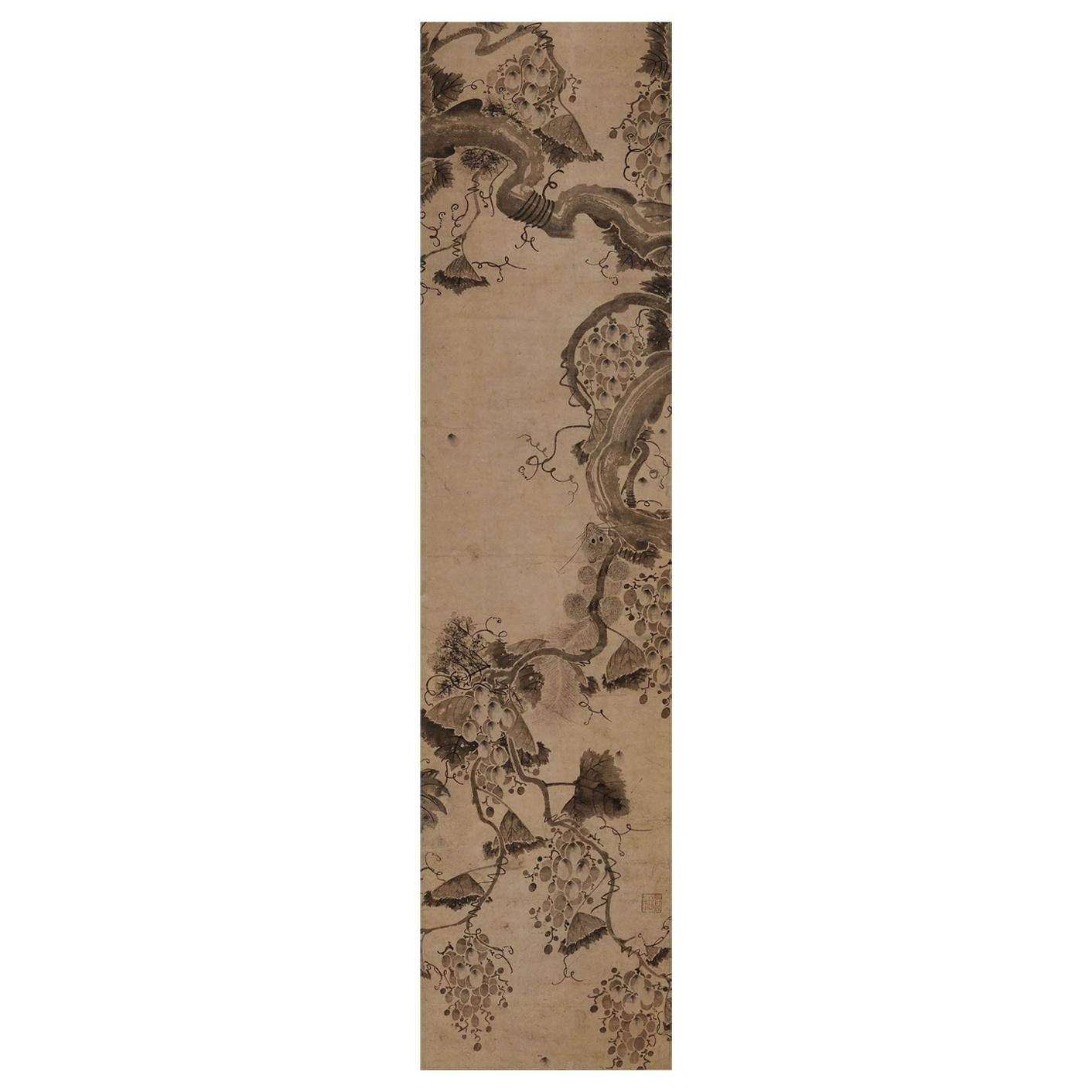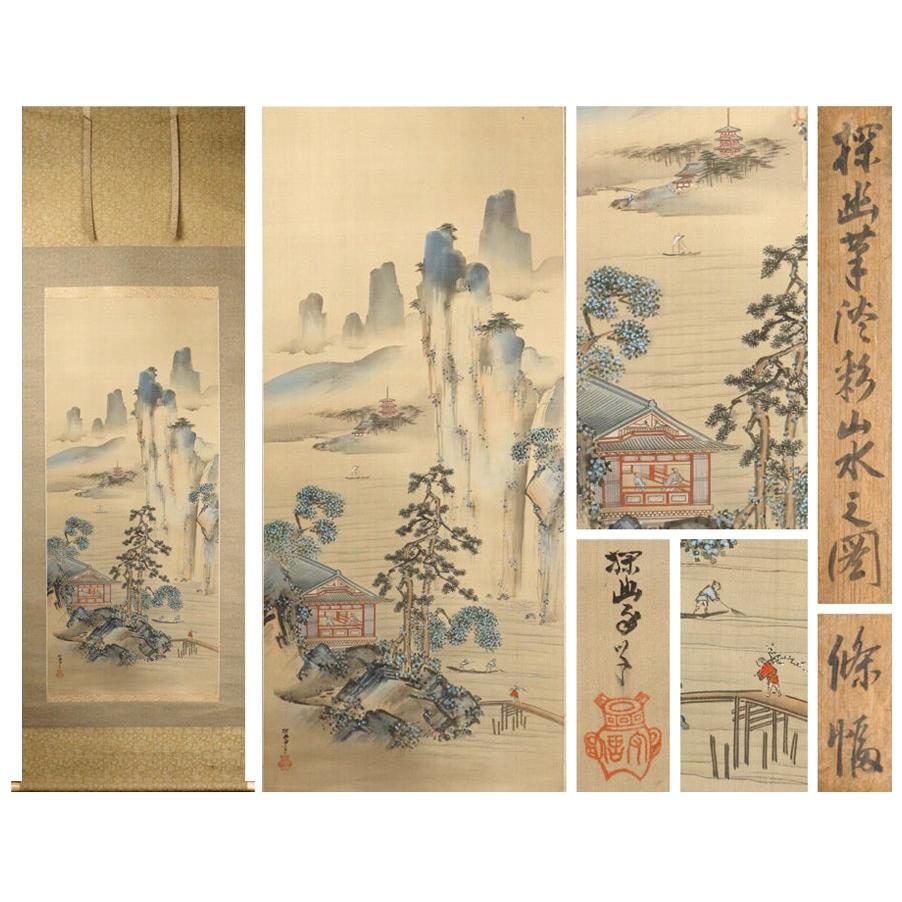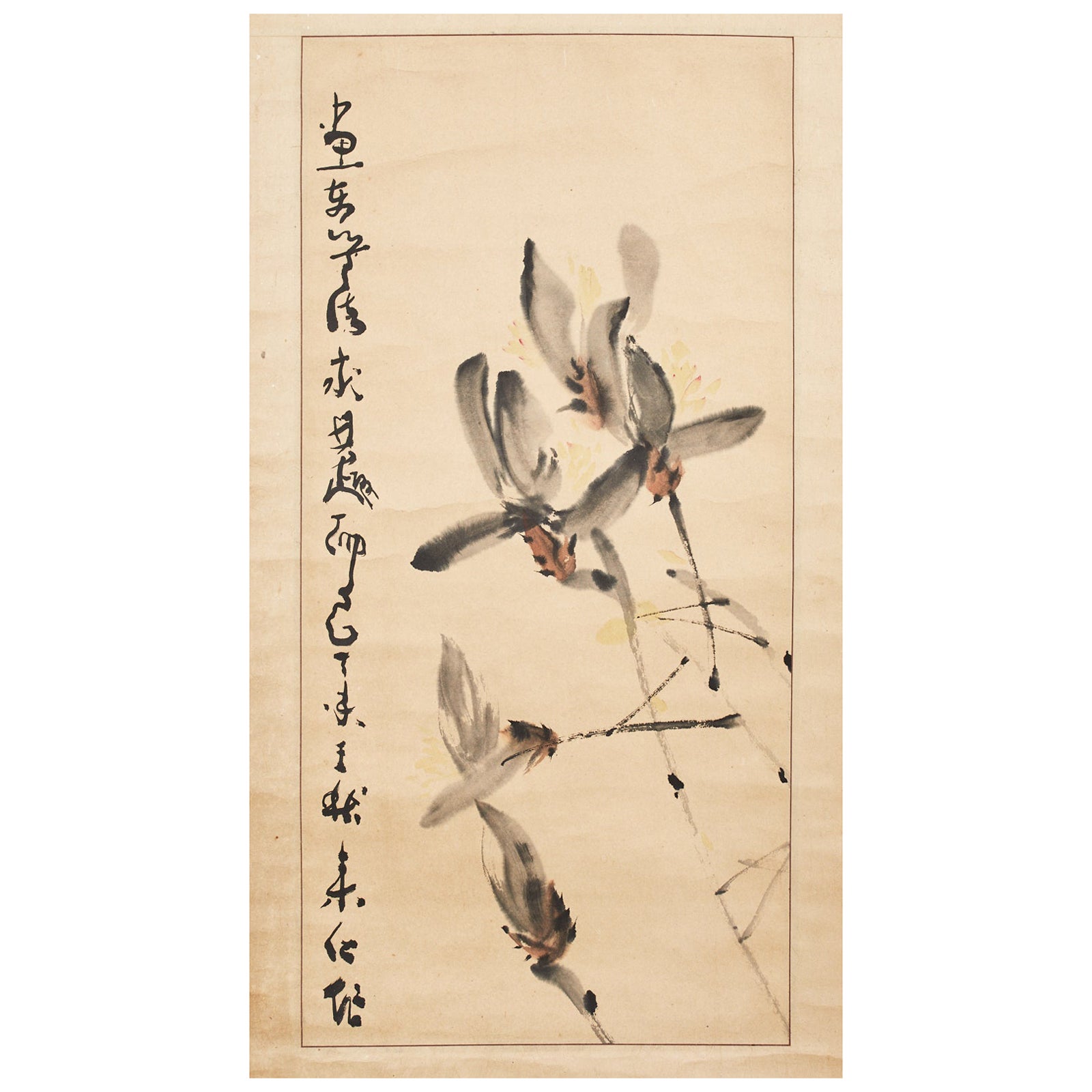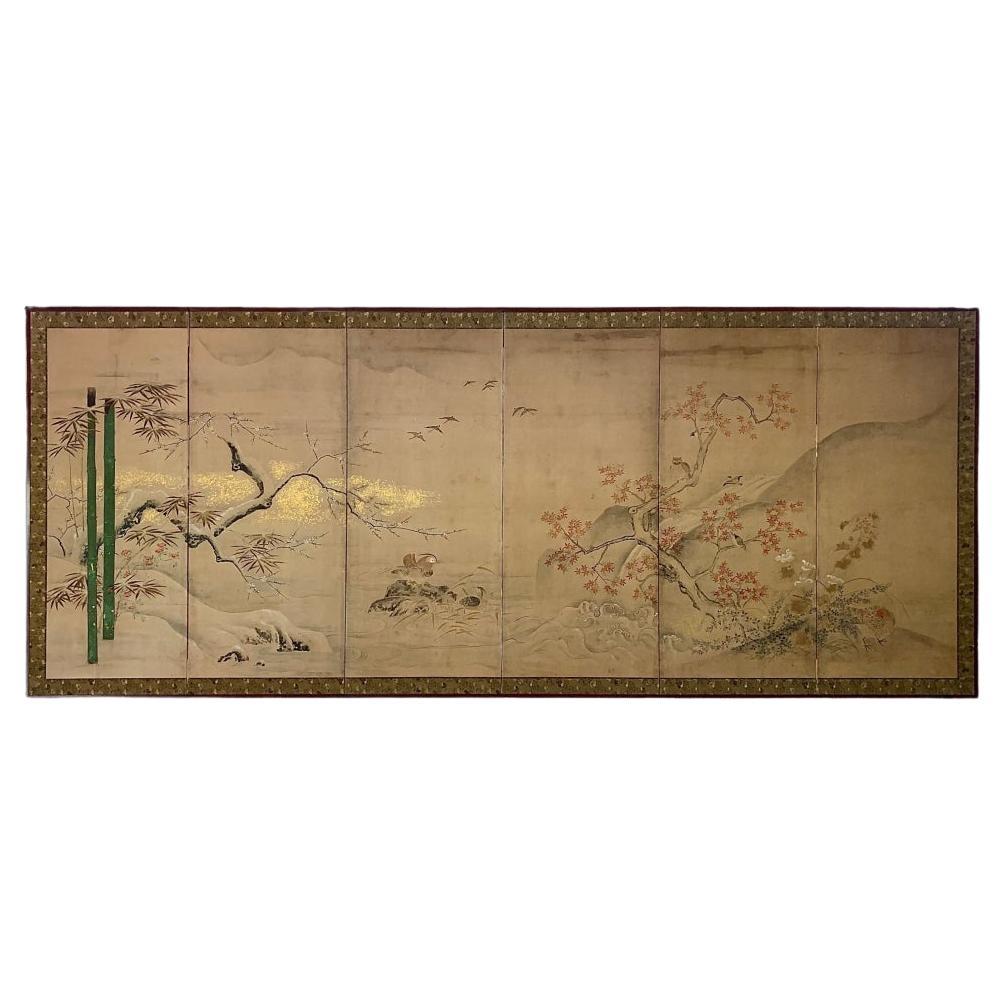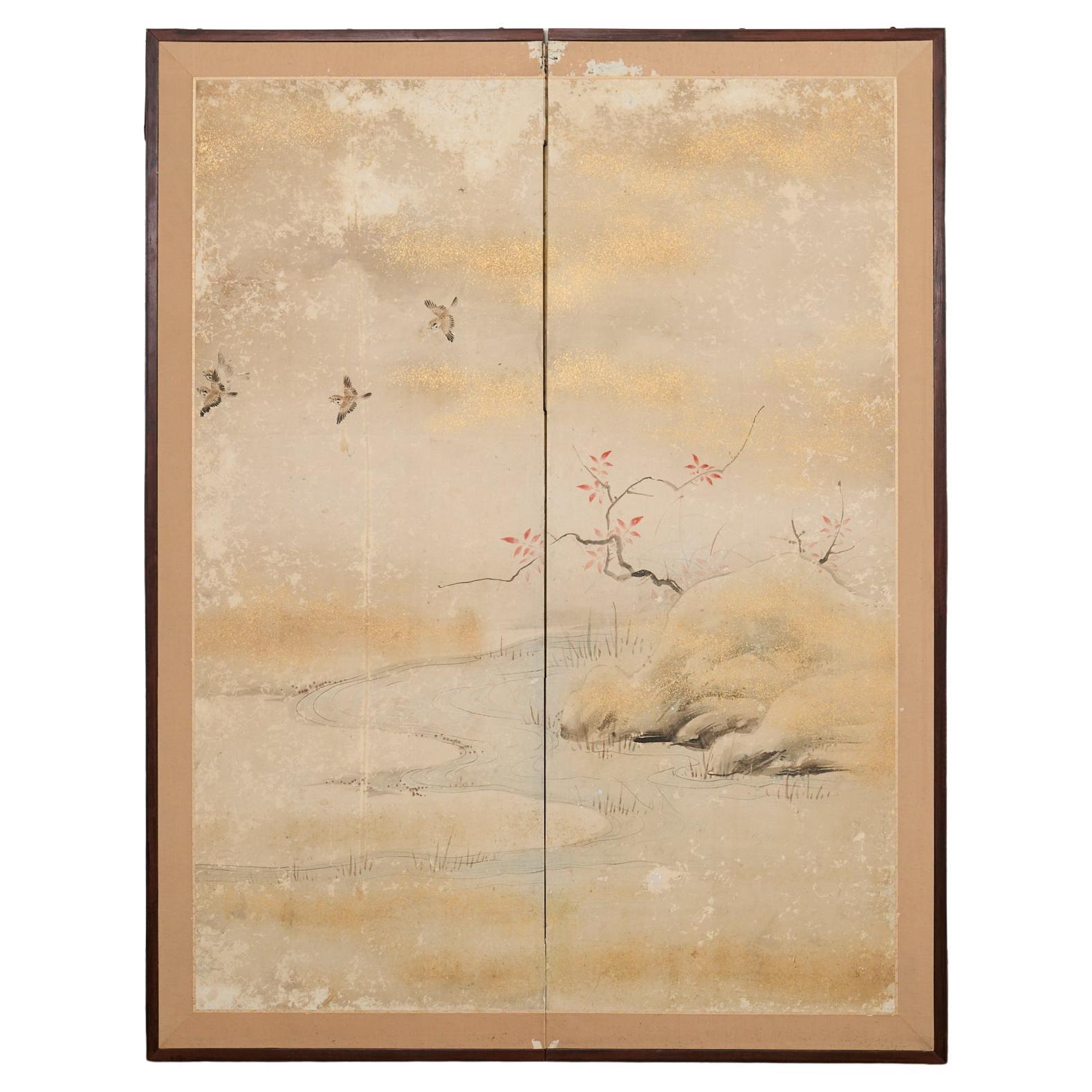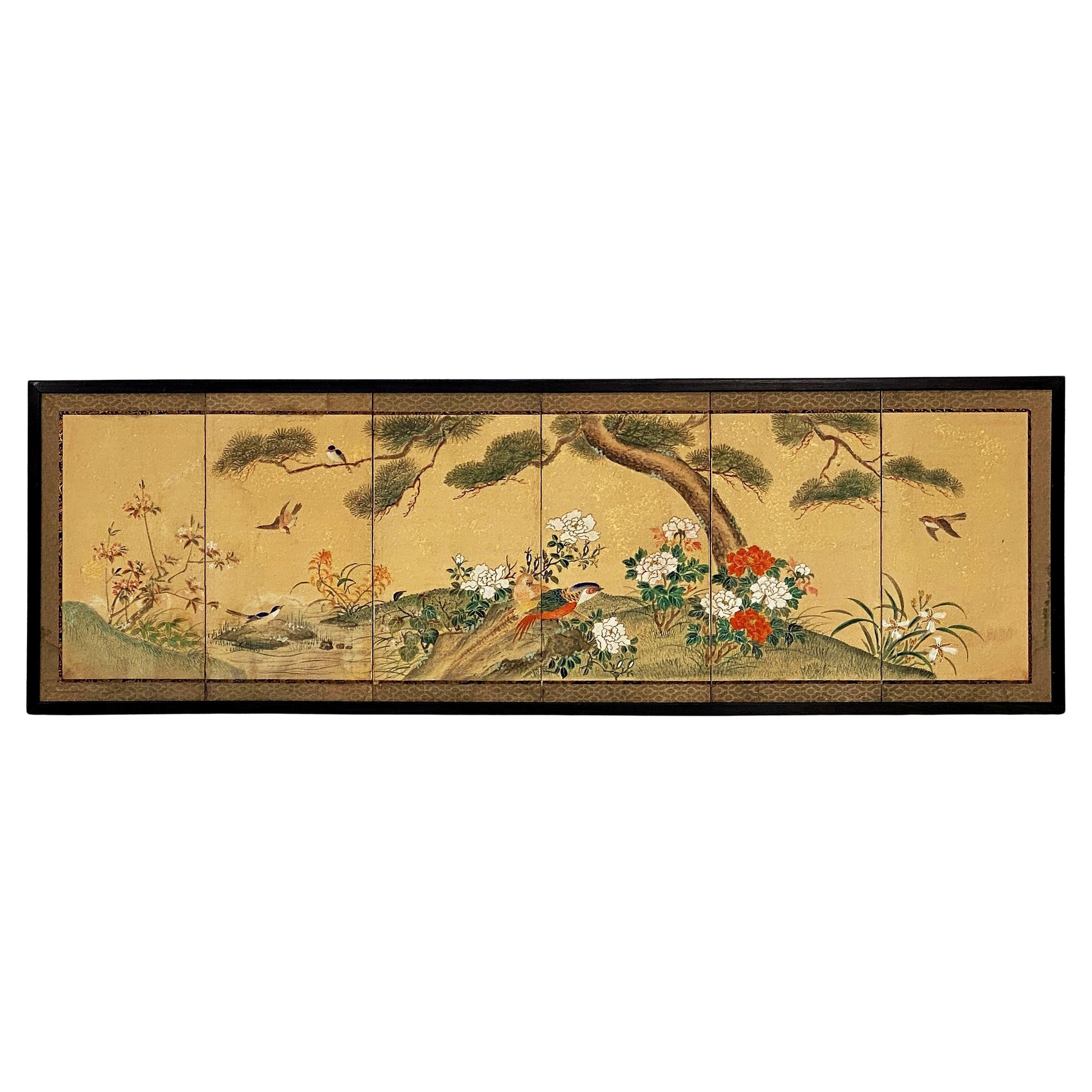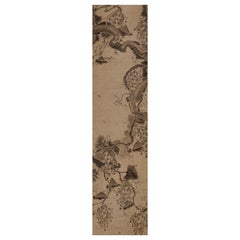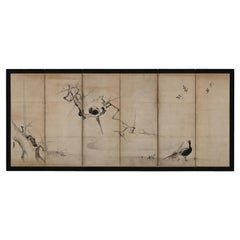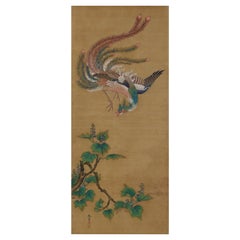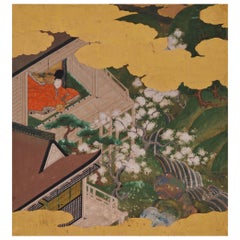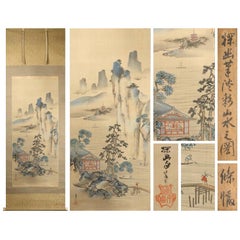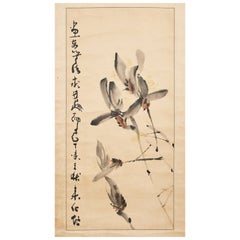Items Similar to Korean Painting, Wall Panel, 17th Century Ink Grapevine
Want more images or videos?
Request additional images or videos from the seller
1 of 7
Korean Painting, Wall Panel, 17th Century Ink Grapevine
$12,500
£9,615.83
€11,161.25
CA$17,627.98
A$19,746.31
CHF 10,371.47
MX$240,108.75
NOK 131,336.73
SEK 124,673.87
DKK 83,300.71
About the Item
Grapevine
Anonymous. Korean, 17th century.
Wall panel, ink on paper.
Upper seal:
Kou Kinun in
Lower seal:
Kaigen
Dimensions:
Measures: 98.5 cm x 29.5 cm (39” x 11.5”).
The painting is mounted on a strong, lightweight wooden lattice frame, prepared with multiple layers of Japanese washi paper. The panel is edged with antique gold leaf paper. The techniques are traditional and archival.
The grape, not indigenous to Korea, was considered rare and exotic and the subject of grapevines rendered in ink was popular among literati painters throughout the Choson period (1392-1910). That these plants could be rendered monochromatically with simple ink and a calligraphic brush made them especially favored subjects for literati artists, whose lives revolved around the arts of the brush: poetry, calligraphy, and paint¬ing. The twisting vines, curling tendrils and round, plump grapes provided ample opportunity for expressive "brush play."
This 17th century work is Minimalist, offering a close-up view of a grapevine rendered with an air of spontaneity and a calligraphic elegance. The elements themselves are quite realistic, though the composition is intimate with atmosphere and effect predominant. Ink palette helps build compositional space more profoundly than any organising principal. Without evocative mists and linear gradations the artist goes rapidly and efficiently to the point, abstracting the scene. Leaving three quarters of the surface empty, the artist relies strongly on negative space. The perspective is quite austere, though the deliberately uncentered composition has a fluid rhythm. The grapevine springs up from nowhere, emerging from one side of the canvas and disappearing just as abruptly into another.
- Dimensions:Height: 39 in (99.06 cm)Width: 11.5 in (29.21 cm)Depth: 0.75 in (1.91 cm)
- Style:Other (Of the Period)
- Materials and Techniques:
- Place of Origin:
- Period:
- Date of Manufacture:17th Century
- Condition:Refinished. Wear consistent with age and use. Conservation and re-mounting undertaken in Kyoto utilizing traditional techniques and craftsmen.
- Seller Location:Kyoto, JP
- Reference Number:1stDibs: LU2472312548091
About the Seller
5.0
Recognized Seller
These prestigious sellers are industry leaders and represent the highest echelon for item quality and design.
Established in 2001
1stDibs seller since 2016
70 sales on 1stDibs
Typical response time: 6 hours
- ShippingRetrieving quote...Shipping from: Kyoto, Japan
- Return Policy
Authenticity Guarantee
In the unlikely event there’s an issue with an item’s authenticity, contact us within 1 year for a full refund. DetailsMoney-Back Guarantee
If your item is not as described, is damaged in transit, or does not arrive, contact us within 7 days for a full refund. Details24-Hour Cancellation
You have a 24-hour grace period in which to reconsider your purchase, with no questions asked.Vetted Professional Sellers
Our world-class sellers must adhere to strict standards for service and quality, maintaining the integrity of our listings.Price-Match Guarantee
If you find that a seller listed the same item for a lower price elsewhere, we’ll match it.Trusted Global Delivery
Our best-in-class carrier network provides specialized shipping options worldwide, including custom delivery.More From This Seller
View All17th Century Korean Grapevine and Squirrel Scroll Painting, Mid Joseon Period
Located in Kyoto, JP
Anonymous. Korean, 17th century. Joseon period.
Hanging scroll. Ink on paper.
Seal: Shinso
Dimensions:
Scroll: H. 200 cm x W. 31 cm (79” x 12”)
Image: H. 122 cm x W. 29.5 cm (48” x 11.5”)
The grapevine came to China and then Korea from western Asia via the silk road trade routes. By the mid-Joseon period, it was one of the most popular subjects for Korean literati painters. Grapevines were painted as a singular subject or, less commonly, in combination with squirrels, which are associated with children due to their playful nature. Together, grapevines and squirrels embody wishes for abundant offspring and wealth.
For the Korean literati artist the twisting vines, curling tendrils and round, plump grapes provided ample opportunity for expressive "brush play”. In this painting the artist has abstracted the scene and is seemingly unconcerned with discontinuities and proportion. Vines spring up from nowhere, grapes hang in random clusters and the squirrel’s head appears as if twisted backwards. For the vines and leaves we can feel a sense of speed in the brushstrokes, imparting a dynamic feel which is at once intense and animated. This contrasts dramatically with the countless tiny strokes of ink which realistically capture the texture of the squirrel’s fur...
Category
Antique 17th Century Korean Other Paintings and Screens
Materials
Paper
17th Century Japanese Screen. Ink Plum Tree & Birds by Kano Naonobu.
Located in Kyoto, JP
Kano Naonobu (1607-1650)
Plum Tree and Birds
Six-fold Japanese Screen. Ink and slight color on paper.
In this evocative ink work spread over a six-panel folding screen, we see the consummation of the elegance and refinement of the Edo Kano school. This 17th century screen is a rare surviving example of a large-scale bird and flower painting by Kano Naonobu, the younger brother of Kano Tanyu...
Category
Antique 17th Century Japanese Edo Paintings and Screens
Materials
Wood, Paper
19th Century Japanese Silk Painting by Kano Chikanobu, Phoenix & Paulownia
Located in Kyoto, JP
Birds & Flowers of the seasons
Pheasants & Plum in Snow
Unframed painting. Ink, pigment and gofun on silk
Kano Chikanobu 1819-1888
Signature...
Category
Antique Mid-19th Century Asian Edo Paintings and Screens
Materials
Silk
Japanese Painting, 17th Century, Tale of Genji, Tosa School
Located in Kyoto, JP
Illustration to an unidentified chapter of the Tale of Genji (Genji Monogatari)
Tosa School (second half of the 17th Century)
Ink, pigment, gofun and...
Category
Antique Late 17th Century Japanese Edo Paintings and Screens
Materials
Gold Leaf
Japanese Screen Painting, Circa 1700 'Tales of Ise' by Tosa Mitsusuke
By Tosa Mitsusuke 1
Located in Kyoto, JP
A six-fold Japanese screen by Tosa Mitsusuke (1675-1710), Japan 17th-18th century, Edo period.
The signature reads Shoroku-i ge Tosa sa Konoe Shogen Mit...
Category
Antique Late 17th Century Japanese Edo Paintings and Screens
Materials
Gold Leaf
17th Century Japanese Screen. View of West Lake by Unkoku Toyo.
Located in Kyoto, JP
Unkoku Toyo (1612-1668)
View of West Lake
Pair of eight-panel Japanese Screens. Ink and gold wash on paper.
Dimensions: Each screen: H. 110 cm x W. 372 cm (43” x 147”)
This pair ...
Category
Antique Mid-17th Century Japanese Edo Paintings and Screens
Materials
Paper
You May Also Like
Lovely 17th-18th Century Scroll Painting Japan Artist Kano Soyu Painted
Located in Amsterdam, Noord Holland
It is a work that is said to have been drawn by Kano Soyu as you can see.
It is a picture of the light-colored Sansui map carefully drawn to the smallest detail, and the
towering m...
Category
Antique 17th Century Japanese Edo Paintings and Screens
Materials
Silk
$2,936 Sale Price
20% Off
Chinese Floral Painted Scroll Signed and Dated
Located in Rio Vista, CA
Seasonal autumn Chinese hanging scroll featuring a painting of delicate flowers with a calligraphy signature and date. Crafted on hand-made mulberry paper...
Category
20th Century Chinese Qing Paintings and Screens
Materials
Brass
Edo Period Seasonal Transition Screen
Located in Fukuoka, JP
Edo Period Seasonal Transition Screen
Period: Edo
Size: 368 x 153 cm
SKU: PTA148
This exquisite six-panel screen, adorned with golden flakes, beautifully portrays the seamles...
Category
Antique 19th Century Japanese Edo Paintings and Screens
Materials
Gold Leaf
Japanese Edo Two Panel Screen Meandering Stream with Birds
Located in Rio Vista, CA
Weathered Japanese late 18th century Edo period two-panel byobu screen depicting a meandering stream with sparrows in flight. Crafted with natural ink and color pigments on mulberry ...
Category
Antique 18th Century Japanese Edo Paintings and Screens
Materials
Brass
Framed Chinese Hand-Painted Six-Fold Wall-Hanging from the 19th Century
Located in Austin, TX
A beautiful framed Chinese six-fold wall-hanging of silk and paper from the 19th Century, featuring a finely hand-painted landscape scene of birds and flowers.
Category
Antique 19th Century Chinese Paintings and Screens
Materials
Silk, Paper, Wood, Paint
Japanese Two-Panel Screen: Ink Landscape on Silk
By Shunyu
Located in Hudson, NY
Japanese Two Panel Screen: Ink Landscape on Silk, Meiji period (1868 - 1912) painting of a man riding a mule on a pathway through the Kurotani mountains with a thatched roof shelter ...
Category
Antique 19th Century Japanese Meiji Paintings and Screens
Materials
Silk, Wood
More Ways To Browse
Antique Wall Panel
Antique Round Painting
Asian Wall Panels
17th Century Wood Panels
Grapevine Furniture
Korean Traditional Furniture
Japanese Wall Screen
Lattice Panel
Used Lattice Panels
Painting In Round Frame
Wooden Screen Panels
Calligraphy Brush
Calligraphy Brushes
17th Century Japanese Paintings
Antique Japanese Wall Panels
Japanese Brush Painting
Asian Wood Wall Panels
Korean Panel
